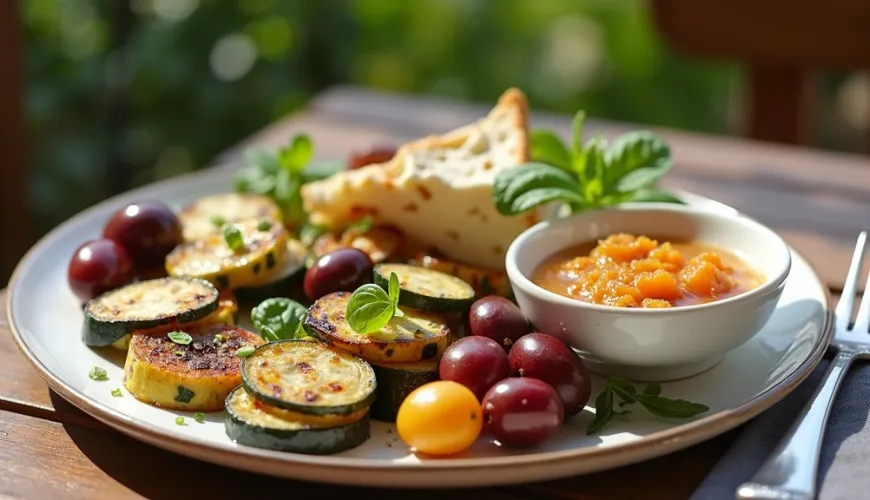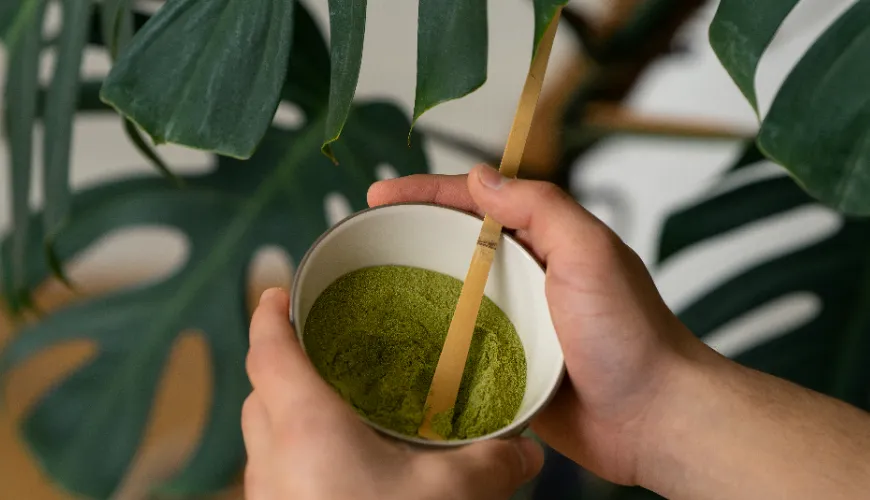
Apricot Chutney Recipe as a Healthy Addition to Any Meal

On hot summer days, when apricots ripen to a rich orange color and release their aroma from afar, they experience their most beautiful moments. The best ones are, of course, eaten straight from the tree, but what about those that are riper and might spoil by the next day? The solution can be an extraordinary culinary adventure – such as apricot chutney, also known as apricot chutney. This sweet and spicy Indian dish pairs perfectly not only with exotic meals but also as an unconventional complement to grilling or with cheeses.
What is apricot chutney good for?
You might wonder: why should I add onion, vinegar, and chili to apricots? The answer is simple – it's these contrasts that create a complex condiment that can elevate even ordinary food to a gourmet experience. Apricot chutney with chili can enhance a simple slice of roasted tofu, wonderfully complement blue or goat cheeses, and even go well with vegan burgers or roasted vegetables.
Unlike traditional jams, chutney is not cooked to a complete thickness, and no pectin is added – the result is more of a thick sauce with pieces of fruit and vegetables that retain their texture. It combines the sweetness of apricots, the piquancy of spices, the acidity of vinegar, and perhaps the sharpness of garlic or ginger. Thanks to this, it acts on the taste buds like a small explosion.
One of the greatest benefits of this recipe is its variability. The base consists of only a few ingredients, but it's entirely up to you how spicy or sweet you want it. It can be canned and stored all year round, or you can prepare a small batch for a weekend gathering with friends around the grill. So let's take a look at a proven recipe for apricot chutney that you can customize to your liking.
Recipe for homemade apricot chutney with chili
Ingredients:
- 1 kg of ripe apricots (ideally homegrown or organic)
- 1 large onion (yellow or red)
- 2 cloves of garlic
- a piece of fresh ginger (1–2 cm)
- 1 red chili pepper (or more to taste)
- 150 ml of apple cider vinegar
- 200 g of brown sugar
- 1 teaspoon of mustard seeds
- 1/2 teaspoon of cumin
- salt to taste
First, wash the apricots, pit them, and cut them into smaller pieces. Chop the onion finely, grate the garlic and ginger, and slice the chili into thin rings (those who don't like it too spicy can remove the seeds).
In a pot, heat a little oil and first sauté the onion. Add the garlic, ginger, and chili, and briefly fry until fragrant. Then add the spices – mustard seeds and cumin – and let them release their aroma. Next, add the apricots, sugar, and vinegar, mix, and bring to a boil. Reduce the heat and let it simmer gently for about 45–60 minutes until the mixture thickens.
Stir occasionally and season with salt towards the end. The finished apricot chutney should have a consistency thicker than jam but with visible pieces of fruit and onion.
If you want to store it for a longer period, pour it hot into sterilized jars and turn them upside down. It will last for several weeks in the fridge even without canning.
Kitchen inspiration – how to make the most of chutney?
In addition to classic serving methods, such as a side dish for roasted meat or grilled vegetables, apricot chutney with chili is also great in modern cuisine. For instance, in combination with chickpea patties, it adds juiciness and a gentle spiciness to the dish. It can be added to sandwiches instead of mayonnaise or used as a dip for nachos or crispy crackers. In India, chutney is often served with naan bread, but in Czech cuisine, it finds its place alongside potato pancakes or roasted pumpkin.
In practice, it might look like this: you prepare simple vegan tapas – pieces of roasted zucchini and eggplant, a few olives, slices of hard cheese, and small bowls with various dips. Alongside hummus and tomato salsa, you include apricot chutney, which immediately captivates with its color and aroma. Guests will ask what it is, and once they taste it, they won't want to stop.
A blog reader once wrote: "A closed jar of this chutney is like a little treasure. When unexpected guests arrive, just open it, add a few crackers and cheese – and you have a luxurious treat in five minutes." And that's exactly how chutney works – as a lifesaver and decoration for any table.
Why apricots?
Apricots are not only tasty and juicy but also offer a range of health benefits. They contain beta-carotene, vitamin C, potassium, and fiber. Moreover, they are naturally sweet, reducing the need to add large amounts of sugar. Combined with vinegar and spices, they create a balanced flavor profile that is pleasant even for those who don't typically prefer spicy foods.
Try our natural products
And even if you're not a fan of chili, you can adjust the recipe to your liking – either completely omit the spicy component or, on the contrary, add other spices like cinnamon, cloves, or cardamom, creating a more "Christmas" version of chutney, ideal, for example, with blue cheese.
The advantage is that the recipe doesn't require any unusual ingredients – most of them are commonly found at home. And if you don't feel like spending time cooking but crave a similar taste, you can also check out the range of natural organic chutneys in stores specializing in eco-friendly foods. Some brands even offer ready-made apricot chutneys with organic certification and no added sugar.
Chutney as part of a sustainable kitchen
Another reason to venture into making apricot chutney is its sustainability. This recipe helps process overripe, soft, or aesthetically imperfect apricots that would otherwise end up in the trash. At a time when the topic of zero waste and careful handling of food is gaining increasing importance, even such a "small" act is a valuable contribution. Moreover, you don't have to use imported apricots – in the summer, there are plenty in the Czech Republic, often available from local farmers without packaging and at a good price.
In this way, you not only create a tasty and original complement to any meal but also support local production and prevent unnecessary waste. And the best part? Each batch of chutney will be a little different – sweeter, spicier, depending on the apricots and spices you use.
At first glance, apricot chutney might seem like just an exotic kitchen fad that finds its place in only a few modern households. But in reality, it's an extremely versatile, healthy, and tasty way to use seasonal produce – while making something that combines nature, care, and the joy of food.







